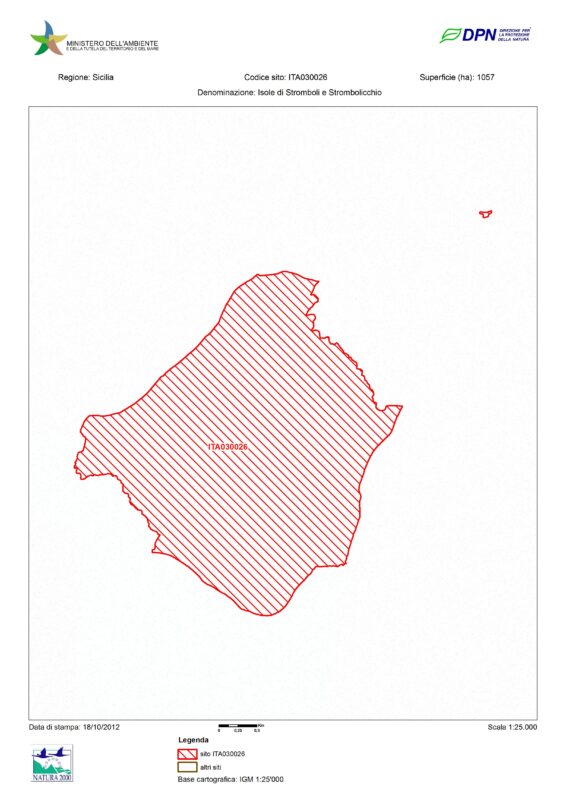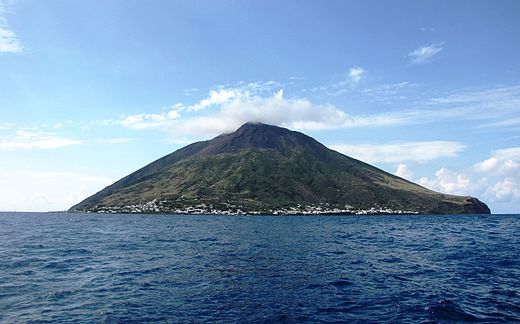Stromboli and Strombolicchio islands (ITA030026)
Site type: SAC Special Conservation Area
Code: ITA030025- Hectares: 1057
Stromboli has a more complex structure deriving from 6 distinct periods of volcanic activity. Consistent recent lava fields present in the most part north of the island (Sciara del Fuoco). The highest peak of the island (918 m) is in continuous explosive and effusive activity. Strombolicchio is a volcanic neck eroded of basaltic-andesitic composition and represents the oldest structure of the Strombolian complex. From the climatic point of view, the island is affected by a Sub-humid thermo-Mediterranean climate with average annual rainfall of about 580 mm and average annual temperatures around 18 ° C. Due to the recent formation of the island and the ongoing volcanic activities Stromboli has a vegetation mostly with a pioneer character. Quite widespread are the desert surfaces due to the continuous supply of volcanic sand and lava coulters. In the most protected sections, however, there are wooded aspects quite mature characterized by the presence of Quercus ilex or more rarely Cytisus aeolicus. The shrubby aspects of Genista are quite frequent tyrrhena and Euphorbia dendroides. On the cliffs and rocky walls, casmophilous aspects, sometimes sub-halophilous, settle in which some rare plants such as Bassia saxicola, Hyoseris taurina, Dianthus rupicola, Matthiola rupestris, Centaurea aeolica, etc.
Stromboli represents the island with the most recent origin compared to the others of the archipelago and also reaches the highest altitude. Plant communities more significant are those of a purely pioneer character, such as the casmophilous formations in which the rarest and most interesting species are located. Quite widespread and the glareic aspects related to skiing and surfaces with inconsistent substrates are also well represented. Rather circumscribed or in any case well localized are the shrub and wood formations. In the territory there are also various entities that in the regional area are rare or considered of significant interest phytogeographic, in turn mentioned in the list in section 3.3 (D). The island is located on an important migratory route for birds of prey and storks that affects the same migratory flow of the Strait of Messina. The passage of passerines is also significant, especially in autumn; abundant they are Turdids and Silvids. Among the nesting birds, the most important presences are represented by the colonies of the Queen's falcon, located on the rocky cliffs. Between significant passerines are the presence of Magnanina. The conservation status of the habitats can be considered good and allows to host a fauna relatively rich with some endemic species, sometimes only from the Aeolian archipelago

Source: Ministry of the Environment Natura 2000 form
Ministerial data: Natura 2000 form
Card insertion: Ignazio Caloggero
Photo: web
Information contributions: Ignazio Caloggero, Region of Sicily



